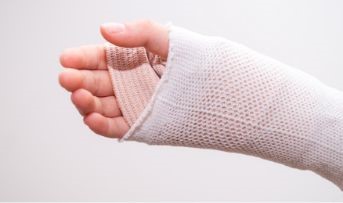General Insurance Blogs, Articles & Updates by - Magma HDI
Have us call you
- RENEW YOUR POLICY
- BUY NEW POLICY

What's under a car’s bonnet? A basic guide for new drivers
Driving can be an overwhelming experience, at least when learning the basics of safe driving. While not difficult, it is a task that requires the presence of mind, effective judgement, and, most important of all, confidence. The more you know and the further you drive, the better driver you become.
Sitting in the driver's seat can be confusing initially, as various components are essential to the smooth functioning of a car, and it is impossible to know their importance and how to operate them instantly. While no manual can replace regular practice, you must brush up on the car's know-how to become a confident driver. Having complete knowledge of car features makes you enjoy driving your vehicle.
One such important section is the bonnet of your car. Located at the front of the car, lifting your bonnet will open up a whole new world. Most people need to learn about the components of a bonnet and the functioning of each part. While it may seem complicated, it is advised to know the basics of the workings of the machinery. Since breakdowns don't occur post-announcement, awareness of its working can resolve the breaking of your machinery.
You should also check under your bonnet regularly to avoid problems later. Also, you should buy car insurance in advance to avoid hassles later. Review the car insurance price in India before you invest in any.
For now, let's look at the basics of what lies under your bonnet.
1. Engine:
The engine is the most critical component located under your bonnet. The extensive working of the engine can be complicated. You don’t need to understand the work in detail. You just require to have a basic knowledge of the same. Here, the fuel consumed by your car is turned into power to run the vehicle. You should look for signs of wear and tear here. A professional inspection may help identify the same and point out any cause for concern. Frequently check for the level of different fluids like engine oil, coolant, etc., especially before planning a long trip.
2. Battery:
The batteries are surrounded by a protective shield and are easy to spot under your bonnet. The rectangular battery box has terminals on both ends, which are differently coloured. Red indicates a positive terminal, while black indicates a negative one.
3. Alternator:
Alternators are responsible for powering up the batteries, which keeps the car up and running. If it breaks down, it can lead to significant problems, including affecting the engine's functioning. The alternators resemble a wheel with slits on the side.
4. Radiator:
This is an essential component of the car that helps maintain the ideal temperature of the car engine. It regulates the temperature extensively. You should not interfere with the radiator much as it can be highly hazardous.
5. Engine coolant:
This fluid is responsible for keeping the engine's temperature in check and preventing it from overheating. You should check the fluid level regularly. It should lie between the minimum and maximum levels. You can easily spot the coolant tank upon opening the bonnet. The coolant should combine water and antifreeze.
Other important components that lie underneath include brake fluid, dipsticks, oil, crankshaft, belts, and cylinders. They have a distinct functioning of their own. You need to know the basics of the major components of your car's bonnet before you start driving a car. It always comes in handy, mainly when your car breaks down midway. You should also have suitable car insurance that protects it financially. However, before buying, you should know the car insurance price in India to understand various options and invest in the best one.
Click HERE to buy the best car insurance to protect your valuable asset.
Disclaimer: The information provided above is for illustrative purposes only. To get more details, please refer to policy wordings and prospectus before purchasing a policy.

Try these effective home remedies to get rid of constipation
Constipation is the most prevalent digestive condition and can affect people of all ages. It is often not indicative of anything dangerous, but it can certainly create discomfort and aggravation. It can occur due to various reasons, including a lack of fibre consumption, exercise, water intake, the use of certain drugs or pregnancy.
Prolonged constipation can be caused by various factors, including poor eating habits or a medical condition. Changing your habits or turning to over-the-counter medications might quickly alleviate occasional instances of constipation. You must buy health insurance online India to safeguard your health against troubles in an emergency.
Try some of these essential home remedies for constipation alleviation to see if they work for you.
1. Warm water:
Poor hydration is a typical cause of constipation, making it harder to expel hard stools from one's system. Therefore, increasing water consumption is the first and most straightforward cure for constipation.
You must drink lukewarm water as often as possible. If constipation is a recurring problem for you, make it a habit to drink at least one glass of lukewarm water in the morning.
2. Ginger:
Ginger is commonly used to enhance flavour, but it also has many health advantages. Being a prominent spice in every Indian kitchen, it is recognised for its natural laxative effects. Consumption of ginger aids in promoting bowel movement and the treatment of constipation. Drinking ginger tea or massaging your abdomen with ginger essential oil are some effective methods.
3. Fibre-rich foods:
Foods rich in fibre can provide instant relief and may even be beneficial in preventing constipation in the long run. Soluble fibre can aid in absorbing water and binding fatty acids. This results in the formation of a gel, which leads to softer stools.
4. Coffee:
Bowel movement can also be induced by the contraction of the abdominal muscles when drinking caffeinated beverages. To aid in the movement of the stool, drinking coffee can be helpful. One or two cups will readily alleviate constipation.
5. Lemon juice:
Lemons are naturally acidic and high in vitamin C and antioxidants. Constipation can be cured by drinking warm water with lemon juice, a common home remedy for the condition.
This helps remove waste products from the digestive tract and draws water into the intestines. Water helps soften stool and encourages bowel motions when the volume of water in the body increases.
6. Probiotic:
Probiotics are well-known to support maintaining a healthy digestive tract. They contain beneficial strains of bacteria such as Bifidobacterium and Lactobacillus, which help keep a healthy digestive system.
Natural probiotics can be found in various foods, including sauerkraut, yoghurt, and kefir, which are all readily available. Those who suffer from stomach troubles should use these remedies regularly.
7. Pineapple juice:
Besides being delicious, pineapple juice provides a long list of health advantages. Because it contains a digestive enzyme known as bromelain, it can help to relieve constipation, bloating, and stomach cramping.
Constipation may appear to be a minor condition, but it can harm your overall health and well-being if left untreated. It can also indicate an underlying condition and alert you before things worsen. Health ailments such as intestinal blockages, metabolic problems, pelvic prolapse, or even colon cancer can be the next stage of untreated and regular constipation. To keep yourself protected under the umbrella of health benefits, buy health insurance online India for a happy life.
Click HERE to buy health insurance in India.
Disclaimer: The information provided above is for illustrative purposes only. To get more details, please refer to policy wordings and prospectus before purchasing a policy.

Five best diet tips for people with lactose intolerance
Have you felt sick after eating a meal that comprises dairy products? This is a common condition that people suffer from, and the condition is called lactose intolerance. People with this condition cannot digest lactose, a type of sugar present in dairy products such as milk. It bars people from consuming a large variety of products since our country’s staple diet involves a large quantity of milk and other dairy products.
Over time, several alternative food products are introduced in the market for lactose-intolerant people. Those with the condition can use dairy-free products like soy milk, almond milk, and coconut milk while cooking to replace lactose-based products. However, even with new alternatives to dairy products, lactose intolerance has no cure and can only be managed by itself. You can only invest in reliable health insurance in India to secure your overall health in the future.
Even though undigested lactose is not severe, it can cause extreme discomfort, stomach cramps and intestinal pain, gas, and diarrhoea. Here are a few daily dietary tips that you can follow to manage your lactose intolerance better!
1. Avoid dairy-rich food products:
It is better to avoid consuming anything that can push your body over the edge. Avoid foods with high amounts of dairy content. The best method to follow is the 80/20 method. It involves having your diet composed of 80 per cent dairy-free food and 20 per cent dairy food.
2. Opt for reliable dairy-free products:
Opting for good quality dairy-free products can prevent you from developing symptoms of lactose intolerance. Many low-lactose and lactose-free products are available today and can enrich your daily diet without causing significant changes. Use almond milk or a dairy-free creamer for your coffee or low-lactose cheese for a burger.
While purchasing these products, you must ensure that they are FDA approved and authentic enough. Several products that claim to be dairy-free may not be completely free of lactose. As a trusting consumer, you may consume large quantities of these products and end up suffering from the symptoms anyway. Being a wise and knowledgeable consumer is critical when suffering from certain health conditions.
3. Choose yoghurt over milk:
Several lactose-intolerant people find yoghurt easier to digest than milk. Active cultures in yoghurt make it easier to digest lactose, which allows you to consume a rich source of protein without experiencing severe symptoms. A few spoons of plain Greek yoghurt can significantly improve your gut health.
4. Incorporate calcium and vitamin-D rich foods:
Being lactose-intolerant can cause significant calcium and vitamin D deficiency in your body. Your body needs a good amount of vitamin D to absorb calcium. You must ensure your diet has a well-rounded supply of these nutrients.
Include fish, almonds, green leafy vegetables, oranges, and tofu in your regular diet to ensure a stable intake of the calcium it needs. Eating eggs and salmon can back you up with enough vitamin D as well.
5. Try lactase supplements:
Several lactose-intolerant people take lactase supplements before consuming any dairy products. Lactase supplements can ensure you eat and drink lactose-rich dairy without suffering from any discomfort later. These supplements essentially help break down the complex lactose present in dairy while controlling the uncomfortable symptoms.
These few diet tips can help you enjoy a variety of foods without experiencing the discomfort of your condition. Even as there is no specific cure for lactose intolerance, controlling and managing it can go a long way in ensuring a comfortable and healthy life. Besides this, also remember to invest in comprehensive health insurance to safeguard your health against other ailments and concerns.
Click HERE to purchase the best health insurance in India.
Disclaimer: The information provided above is for illustrative purposes only. To get more details, please refer to policy wordings and prospectus before purchasing a policy.

What's making your car insurance premium costlier
Most of us have invested financially and emotionally in our automobiles, making them more than just a convenience. While cars are undoubtedly a long-term asset, the associated expenses can often amount to a large sum that many may hesitate to bear.
Apart from the regular fuel and maintenance, another necessary cost is your car insurance. Despite being mandated, many find loopholes to escape the law due to the rising cost of premiums annually. Instead of evading the process, find out why your car insurance premium is rising and whether you can manage it.
1. Vehicle inspection:
Your insurer may inspect the vehicle if there is a considerable lag between the policy expiry date and the intended policy renewal date, which may result in a higher insurance premium. You can prevent such costs by renewing your insurance on time as per the due date.
2. Brand and model:
The price of the car relies on its model, due to which different models have different premiums. A vehicle with a lower Insured Declared Value (IDV) will have a lower premium than one with a high IDV.
3. Advantage of NCB:
No-claim bonus is the primary element of a car insurance policy that lowers the premium and promotes careful driving. It rewards car owners for not filing a claim with a discount of up to 20% while renewing the policy. By applying the claims, you risk losing this advantage and could pay a more significant premium than necessary.
4. Driving habits:
Defaulting on laws, failing to use a seatbelt, etc., could get you into difficulty with law enforcement and your insurance company. If any traffic violation is made in your name, your premium will likely go up.
5. Purchasing insurance from the dealer in a hurry:
Explore various car insurance options and evaluate the offering, premium, and coverage to find the best option. A hastily purchased car insurance is a bigger expense than an asset. Additionally, dealers have a restricted area of competence, offer fewer options, and seek direct profits from the sale, so they may offer a policy that is more expensive than you need.
6. Claim history:
You may be a risky policyholder if you have a history of making frequent claims. Your profile might be deemed dangerous if your claim is denied due to factors like illegal vehicle use or involvement in filing fake insurance claims. As a result, you may be charged a more significant premium since the higher the risk, the higher the premium.
7. Vehicle and driver age:
The older the car and the younger the driver, the higher the premium. An older vehicle is more prone to wear and tear, and a novice or inexperienced driver needs to gain the knowledge of an experienced driver. You can lower your rate by choosing a zero Depreciation cover for your insurance plan.
8. Lack of awareness of deductible's effects:
An expense that the owner of the car bears when filing a claim is deductible or voluntary deduction. Making a proper deductible decision is crucial. If you are a seasoned driver who doesn't need to file claims frequently, you can select a greater deductible to lower your cost. However, if you leave it at zero, you will receive your entire claim payment but will have to pay a higher premium.
9. Locality analysis:
The insurer may raise the cost of insuring cars from a particular location if data indicates, for instance, that there has been a significant surge in flooding or car theft in your area.
A closer inspection is all it takes to identify why your car insurance premium increased, even if it may appear unclear initially. Some factors are uncontrollable, while others can be managed by a potential policyholder who has done his research. We encourage readers to check and compare car insurance prices online before purchasing a policy to avail themselves of the best offer.
Click HERE to buy reliable car insurance in India.
Disclaimer: The information provided above is for illustrative purposes only. To get more details, please refer to policy wordings and prospectus before purchasing a policy.

The effective tips to deal with motorbike wrist injury
Wrist damage is one of the most frequent types of injuries among motorcyclists. While some may be caused due to collisions, some are caused due to general riding activities such as using the throttle for a prolonged time or during long bike rides.
However, not all wrist injuries require similar treatment. Some may need substantial surgery and numerous treatments to correct the problem, while others recover independently with little to no therapy. If not given appropriate care immediately after a collision, even relatively minor injuries can cause lifelong disabilities and an adversely impacted lifestyle. If you have recently suffered a wrist injury, keep these tips in mind to help you recover faster!
Also, it would be wise to invest in the personal accident and bike insurance online to cover allied costs of damages done to you and your bike due to an accident.
Why you should seriously consider aftercare for your healing wrist:
Wrists are an integral part of our daily movements. While an injury is enough of a setback, neglecting aftercare worsens the situation. Repeated strain due to bending and bearing weight on them can cause further inflammation and have severe consequences like tendonitis or carpal tunnel syndrome.
However, using the following tips regularly can aid in improving flexibility and easing the pain.
1. Stretching:
Place your palm perpendicular to the forearm by bending the wrist or using the help of a wall to maintain the position. Push back your fingers and hold for 15–30 seconds. Do the same by folding the wrist downwards such that the back of the hand is against the wall and holding for 30 seconds.
2. Extended wrist:
Targeting the wrist, hold a weighted object in your palm. A small bottle or jar serves as the best prop for this stretch. With your fingers cupped around the thing, twist your wrist upwards and backward at a total angle of up to 160 degrees. Start slow, as your movement is bound to be restricted and strained. As you get comfortable, increase the weight and range of motion.
3. Bent finger stretches:
Much like the first stretch, this starts by holding out your fingers splayed out. Bend them at the joints for five seconds. Start with two sets of five repetitions slowly to ease the strain on the nerves.
4. Rotations:
While it may seem impossible immediately post-injury, ease your way into doing this stretch. You may do this with additional weight. Rotate your wrist by focusing on your hand until discomfort sets in.
5. Increasing grip power:
Hold and squeeze a grip gadget or a rubber ball for 5-10 seconds each time. It is a comprehensive movement that helps improve overall flexibility.
Depending on your doctor's advice, avoid riding if your wrist is severely impacted. However, if your doctor approves your riding plans, here are some extra tips that may reduce the strain on your wrist.
1. Practise good posture:
Poor positioning when riding a bike can cause wrist pain. Your nerves and joints may become stressed if your wrists are constantly locked. Make sure your elbows are slightly bent to ease some of this pressure if you need to lean forward while riding your bike.
2. Use attachments on your handlebar:
Add cushioned or gel grips to absorb movement and eliminate handlebar vibrations. Weighted bar ends can help reduce hand fatigue by stabilising vibrations and movement. Also, ensure that you grip the bar with reasonable force.
3. Lock your throttle input:
For simple cruise control, install a throttle lock. It helps maintain speed without adjusting the throttle, reducing the strain on the wrist.
Injuries are an inevitable risk in life. While you cannot avoid them, you can prevent them by exercising caution. Similarly, the mandatory purchase of bike insurance online prudently covers the motorcyclist from shouldering the financial burden of theft and damages to a bike.
Click HERE to buy bike insurance online.
Disclaimer: The information provided above is for illustrative purposes only. To get more details, please refer to policy wordings and prospectus before purchasing a policy.

Here are a few home remedies to deal with sprains
Sprains are one of the most common injuries people encounter by suddenly hurting their wrist, ankle or body while performing daily tasks. It is mainly caused due to stretch or tear of ligaments, and it takes up to two weeks to completely heal from the internal wound and pain. There are various ways to heal your injuries faster and soothe the sprain, some of which we will be discussing in this article.
However, it is crucial to note that while most of these remedies are home remedies, it is best to consult a doctor who can help you choose the proper medication and treatment if the situation worsens. Since the injuries that cause sprains can also cause a fracture, the doctor might suggest you take some tests.
Choosing the best personal accident policy in India is a step that you must take to ensure the best treatment for yourself. Your insurer will cover your medical expenses and hospital bills under this insurance.
Now let us look at some ways in which you can ensure faster recovery of sprains.
1. RICE technique:
Sprains heal the fastest when treated to the RICE technique. Let’s understand what RICE means.
R – REST – Resting the affected area is crucial for faster healing.
I – ICE – Ice pack reduces the blood flow to the affected area and helps in reducing pain or swelling. Apply an ice pack for 20 minutes. Give it a break for 5 minutes and put it back on.
C – COMPRESSION – This helps stabilise the injured area and helps subside the swelling. Wrap a bandage snugly around the wound. Avoid tightly bandaging the area as it might obstruct the blood flow.
E – ELEVATION – Elevation prevents fluid accumulation in the joint. Try to elevate the affected area using a pillow while resting.
2. Heat therapy:
While it is advised to use ice bags immediately after the injury, once the swelling subsides, a hot water bag periodically on the affected area can help soothe the pain and aid in the faster healing of the injury. The heat increases blood flow and relaxes any strained muscles. Another good idea would be to alternate between heating pads and cooling packs.
3. Salt baths:
After a few days of the injury, introduce the affected area to a salt bath. Salt baths are known for their soothing properties. It helps in soothing sore muscles and reduces stiffness significantly, making the affected area mobile and functioning effectively.
4. Protect the injured area:
As you start the healing process, it is crucial not to put much weight or pressure on the affected area. Exerting the area can lead to further tears in the ligament or fracture. In the case of ankle sprains, it is best to avoid any sporting activity or heavy exercise for about two weeks.
You may use crepe bandages to provide external support to your ankles. Remember not to pack them tightly as it will prevent circulation. Similarly, in the case of wrist sprains, avoid lifting weights and use a crepe bandage, as mentioned above.
These are a few ways to give your sprain the care and time it requires to heal. Most of these steps are the aftercare suggested by doctors. However, you must go for a follow-up checkup. This way, you can rest assured that your injury is completely healed, and you can carry on with your daily activities.
In most cases, insurance companies help you go cashless during the treatment. Nevertheless, remember to keep the bills and reports handy for your insurer to verify details. Always go for the best personal accident policy in India for hassle-free insurance claims.
Click HERE for the best personal accident policy in India.
Disclaimer: The information provided above is for illustrative purposes only. To get more details, please refer to policy wordings and prospectus before purchasing a policy.

What is constructive total loss in two-wheeler insurance
Whether you own a two-wheeler or a car, you should always ensure that you know everything about its maintenance and insurance. Getting insurance for your vehicle is of utmost importance. It protects your vehicle from severe damages by giving you compensation and solves third-party disputes.
However, just getting insurance for your vehicle is not enough. You also need to check out the various additional services offered by the insurance. This way, you can choose the most comprehensive insurance for your 2 wheeler. You must also inquire about all the essential terms relevant to your insurance. One such term is a constructive total loss. Although the term sounds complicated, it is not.
This article will help you to understand various aspects of a constructive total loss.
What is a constructive total loss?
You will likely file a claim for your 2 wheeler insurance only when your vehicle has suffered severe damages. Once you have filed a claim, the insurance company will inspect all the damages and reimburse the amount accordingly. Either you will get cashless compensation or money for the repairs. The damage is assessed well, and only compensation for the damages is provided.
If the vehicle is in dire need of minor repairs or servicing, the insurance company will reimburse that. It can also refund the amount for the replacement of bike parts. However, reimbursement only occurs after all the deductibles are assessed carefully. No matter the damage's severity, you will only get compensation up to the Insured Declared Value or IDV. You will not get any claim money that exceeds the IDV value.
There is also a major catch here. For instance, your two-wheeler undergoes irreversible damage. In such a case, the bike will be beyond repair. The insurance company can then declare it as a total loss. In other words, if the repair cost for the vehicle far exceeds its value, it results in total loss.
It is said that when the repair cost is more than 75% of the IDV, it is impossible to reimburse it. The constructive total loss takes place here.
Let's assume that your two-wheeler gets stolen. Then what will happen? In such a case, your insurance company will reimburse you for the IDV of your vehicle. The claim for theft of your bike will be treated as a total loss claim. The reimbursement amount will be sans the deductibles and depreciation.
How do you apply for a constructive total loss claim?
Now that you are familiar with constructive total loss let's look at the various steps to file a claim. They are:
● Go to the official website of your insurance company
● Look for the claims process tab or page
● You will see blanks to fill in your information
● Provide all the necessary information carefully
● After that is done, verify the self-inspection of your bike through the link sent to your mobile number
● A surveyor or inspector may be sent to get your vehicle inspected. Cooperate with them
● Once everything is done, you can submit all the required documents and forms
These easy steps can get you a total claim from the comfort of your home. You need to keep all these things in mind before you file a claim for your 2 wheeler insurance under constructive total loss. Once you give the correct information and abide by the guidelines, you can access the claim amount.
Click HERE to buy 2 wheeler insurance to protect your motorcycle from unexpected damages.
Disclaimer: The information provided above is for illustrative purposes only. To get more details, please refer to policy wordings and prospectus before purchasing a policy.

Let's discuss naturopathy and its effectiveness for a healthy life
While the allopathic world is trying its best, home remedies have also proven very effective, especially in our Indian culture. Naturopathy is the alternative medicinal route to building antibodies, curing health issues, and catalysing the body's healing capabilities and defence mechanisms.
But, how well do you know about naturopathy? Are you aware of the positive effects naturopathy has on the human body? What precautions must you take while going down this route of alternative remedies? Don't worry. This blog has all the answers to your queries and more! Let's discuss naturopathy and its effectiveness for a healthy life.
What is naturopathy?
Naturopathy is a healthcare practise that brings science and nature under one umbrella. It relies on fundamental principles and natural remedies like sunlight, water, exercise, diet, and stress management. Naturopathy enhances the body's ability to regain excellent health without using allopathic or over-the-counter medicines.
What are the pillars of naturopathy?
The five crucial elements of naturopathy include - air, water, fire, earth, and ether. Naturopathy practitioners ensure that they direct your body and mind toward holistic development through hydrotherapy, sunray therapy, mud therapy, air therapy, and vacuum therapy. Naturopathic physicians are state-licenced medical professionals recognised as primary care providers (PCPs).
Following are a few ways in which naturopathy helps heal our bodies.
• The healing power of nature:
The study of naturopathy believes that the human body has a self-healing ability. Naturopathy helps enhance the body's capability to fight and ward off any issues by following a healthy diet, nutrition, regular exercise, and herbal medicines.
• Treat in entirety:
Naturopathy practitioners approach the human body entirely. They believe that human's overall health is composed of more than just physical health. While developing their treatments, naturopaths consider all these factors and establish the medications on a holistic level. While western medicine focuses on suppressing or treating the symptom, naturopathy focuses on restoring the body's health and curing the illness from its core.
• Complete focus on zero harm:
Naturopathy always prioritises treatment methodologies that cause no damage to the body and are non-invasive. While physicians believe in "doing whatever it takes," naturopathy has shown a reluctance to use drugs and methods that can put the human body under external distress. It uses only natural remedies and elements like air, water, earth, and herbs to perform the treatment.
• Identifying the cause:
Symptoms are not only the focus area in naturopathy. Naturopathy practitioners prioritise identifying and removing the cause, not just eliminating the symptoms. The reason helps them diagnose the underlying problem, which allows them to curate their medications and suggest treatment methods.
• Prevention is always the first step:
Naturopathy focuses on developing the body's strength and immunity to keep all diseases at bay. Naturopaths prioritise assessing the risks and provide suggestions through healthy eating habits, a sound sleep cycle, and practising meditation.
Yes, it is effective.
Naturopaths work in close connection with their counterparts to exchange ideas, research, and treatments for the betterment of their patients. Naturopathy can also be related to alternatives like ayurveda, homoeopathy, acupuncture, etc.
Naturopathy is covered under insurance.
Yes, naturopathy is insured by health insurance under AYUSH treatments. All the medical expenses involved in the naturopathy treatment, including access to AYUSH hospitals or day-care centres and in-patient hospitalisation costs, are covered. Also, you may save a considerable amount on your sum insured as the cost of AYUSH treatments is lower than that of allopathy.
These were a few benefits of naturopathy for a healthy life. Since we talked about health and its significance in our daily lives, you must ensure that you stay on top of your health insurance game for yourself and your loved ones. Did you check when you are due for your health insurance policy renewal? If not, hurry! You must ensure that your health insurance stays intact and updated to live your life without worrying about unforeseeable situations.
Click HERE to learn more about health insurance policy renewal.
Disclaimer: The information provided above is for illustrative purposes only. To get more details, please refer to policy wordings and prospectus before purchasing a policy.


